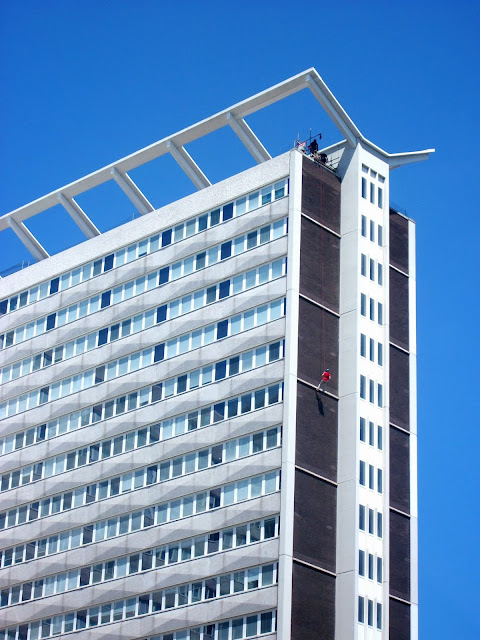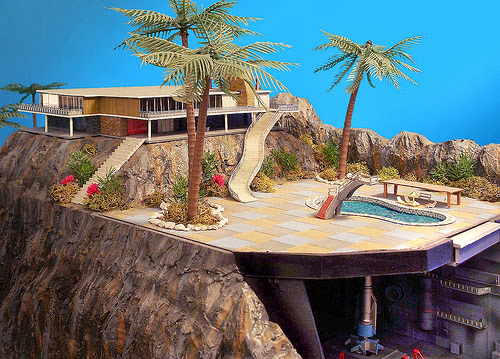Ten tower block tales
 |
| 4. Hutchesontown-Gorbals Area C, (or Queen Elizabeth Flats), Glasgow Successful as Robert Matthew's flats have been, the most famous of the Gorbals high rise blocks were those designed by flamboyant Scottish architect Basil Spence. Sat in the area next to Matthew's blocks, the Queenies took an age to build due to their complex concrete construction, and took their inspiration, like so many blocks in Britain at the time, from Le Corbusier's vast concrete Unité d'Habitation in Marseilles. At first residents loved the all-mod-cons flats with their verandas in the sky. One former resident I interviewed compared them to Buckingham Palace, a flying saucer to Mars, the Hanging Gardens of Babylon and mardi gras. But lack of management would eventually do for them, resulting in everything from terrible damp problems to a crime wave. They were demolished in the 1990s. Picture (c) Simon Chirgwin |
 | |
| 5. Cruddas Park, Newcastle-Upon-Tyne T. Dan Smith was the leader of the Labour council in Newcastle from the late 50s and was determined to tackle the city's terrible slum problems with some quick fixes – and Cruddas Park was his first success. Initially eight point blocks were built on a slope overlooking the Tyne and Scotswood Road from old plans that had been knocking about the office for some time. By the 1980s these celebrated flats were, like the Queenies in Glasgow, besieged with social problems, particularly stemming from heroin and glue addiction. After years of decline three of these original towers have been saved while the other five have been razed, and they've been completely restyled and remodelled as Riverside Dene, luxury private apartments, though they can still be seen in their original state in the closing credits of Whatever Happened to the Likely Lads, framed by the doorway of an otherwise demolished Victorian tenement. Picture (c) Jim Pickett |
 |
| 6. The Tower, Cwmbran Like Harlow, Cwmbran was one of the earliest New Towns, but it took until the 1960s for it to get a tower block, which, at 23 storeys, is over twice the height of pioneering point block The Lawn. The Tower was built next to the new town centre, and its distinguishing feature is a flue that runs all the way up one side: the chimney for the central area's entire district heating scheme. Picture (c) Cold War Warrior. |
















The 3 blocks of flats on the Likely Lads credits are not at Cruddas Park but a few hundred yards away on Westgate Road - Westgate Court, Vallum Court and Todds Nook.
ReplyDeleteIt is called The Lawn. No s on the end.
ReplyDelete